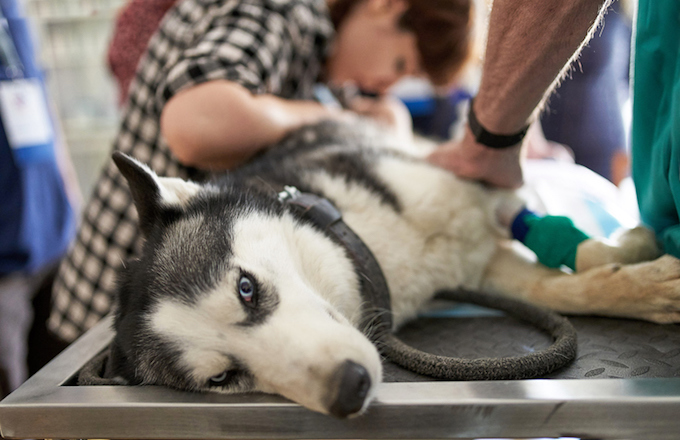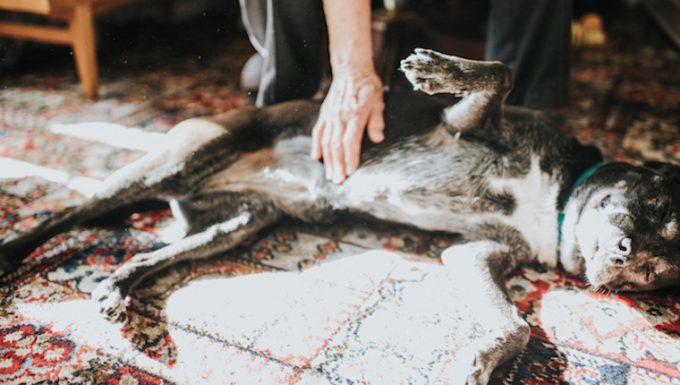Gastric dilatation-volvulus in dogs happens when too much gas and food in the stomach causes it to swell and twist. The condition can be life-threatening.
The condition is often referred to as GDV. Note that the condition is also slightly different from bloat in dogs.
Larger dog breeds are most at risk of developing the condition.
If you see the signs of gastric dilatation-volvulus in your dog, then get to a veterinarian for a proper diagnosis and treatment.
Here’s what you should know about the symptoms, causes, and treatments for the condition.
Symptoms of Gastric Dilatation-Volvulus in Dogs
The condition produces a range of symptoms. For example, some of the most common symptoms include:
- Pain in the abdomen
- Vomiting
- Being restless
- Drooling
- Loss of appetite
- Acting withdrawn
Causes of Gastric Dilatation-Volvulus in Dogs

The cause of the condition is unfortunately unknown. However, certain larger dog breeds are most at risk of developing it. For instance, some of the breeds most at risk include:
- Irish Setter
- German Shepherd
- Saint Bernard
- Great Dane
- Basset Hound
- Weimaraner
Additionally, older dogs are more at risk of suffering from the condition than younger pups.
Treatments for Gastric Dilatation-Volvulus in Dogs
Firstly, your vet will ask about your dog’s symptoms. Secondly, your vet will ask about your dog’s medical history. This will include any breed-specific issues.
Thirdly, a full physical examination will be carried out.
Ultimately, an X-ray is used to confirm the condition. The twisted shape of a dog’s stomach will show up on an X-ray (and differentiate the condition from bloat).
In general, surgery is required to treat the condition. A tube will be inserted down the esophagus. This allows any build up of gas to escape.
Subsequently, a surgery to untwist the stomach will be carried out. Anesthesia will be used during this process.
While recovering from the condition, most dogs will require pain medication. As always, if your vet prescribes your dog any medicine, make sure to stick to the correct dose and frequency instructions. Also, complete the full course of medicine.
Additionally, while recovering at home, your dog will need to consume only small meals. Your vet will help you formulate an appropriate meal plan for your dog.
Have you ever cared for a dog who suffered from this condition? How did your vet help your dog recover? Let us know in the comments section below.









